
Foodservice Towels for Sanitation
Types of Foodservice Towels
Foodservice towels ensure safety and cleanliness when working with food in your restaurant, food truck, or manufacturing plant. Reusable foodservice towels offer an environmentally-friendly solution for cleaning your establishment. Since they can be used multiple times and sometimes laundered, they stretch your budget further than single-use wipes or paper towels.
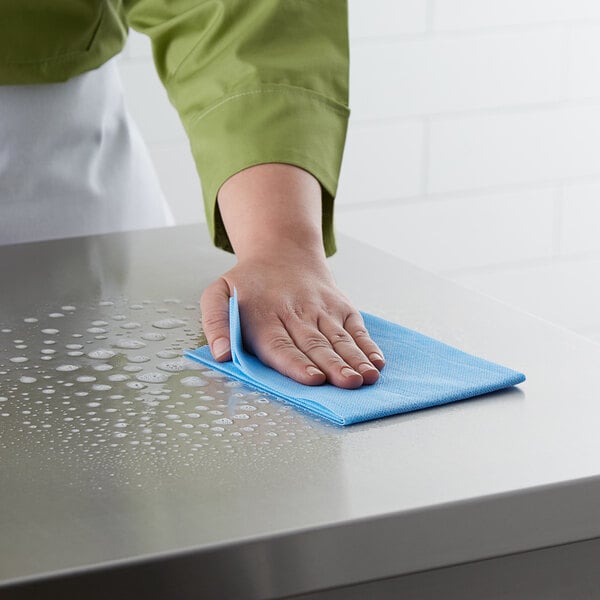
Foodservice Wipes
Providing an excellent cost- and storage-saving alternative to paper towels, foodservice wipers are designed to be a multipurpose option for cleaning or wiping up spills on different surfaces in your kitchen. You can use them to clean, disinfect, or sanitize your bars, tabletops, equipment, and other surfaces. They are highly absorbent and some even come pre-treated with sanitizer to ensure proper sanitizing strength is consistently achieved.
Cost-effective and environmentally friendly, foodservice wipes can be machine-washed and reused multiple times in your commercial kitchen or foodservice area. The number of times each wiper can be washed and reused will vary from wiper to wiper. They can also be easily disposed of after a tough job like degreasing.
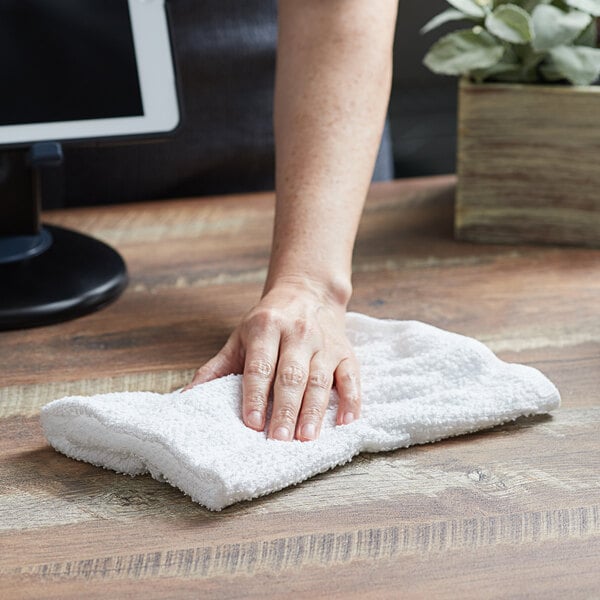
Bar Towels
With a 100% cotton construction, bar towels are highly absorbent, durable, and machine-washable for easy cleaning. The multipurpose towels can be used for just about anything, from wiping down tables and counters to cleaning off cooking surfaces, and they are strong enough to use with soap, sanitizer, and other cleaning solutions.
Bar towels feature different fabric styles that help with their function. For example, ribbed bar towels offer more strength, durability, and longevity than other bar towels, and bar towels with a waffle weave design offer superior scrubbing ability.
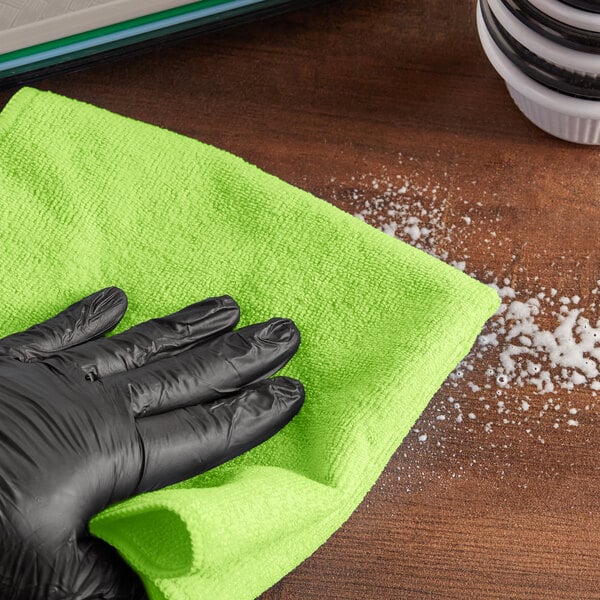
Microfiber Cloths
The tiny fibers of a microfiber cleaning cloth act as hooks that scrape up and hold in dust, dirt, and grime. Microfiber is also highly absorbent and can hold up to seven times its body weight, making it effortless to wipe up spilled liquids. Providing a great alternative to cotton towels, microfiber traps the dirt instead of pushing it around. They also don't leave any residue behind and generally last longer than cotton towels when properly cleaned and cared for.
When it comes to choosing a microfiber cloth, it is necessary to understand a product's GSM (grams per square meter), which measures its weight and pile. A high GSM (375 and above) has a heavier weight, is better at attracting dust and debris, and is more durable, whereas a low GSM (250 and below) has a lighter weight and is lint-free.

Dusting Wipes
Compared to traditional dusting sleeves that can push dust and dirt around, dusting cloths are treated with mineral oil to help them better pick up and hold dust particles. They are made from a stretchable, non-woven fabric with dust-catching pockets, and their disposable design makes for quick and easy cleanup. The low-linting design makes these a great alternative to dusting rags and sprays.
Dusting cloths are soft enough to clean delicate surfaces yet durable enough to be used on floors. They are great for quickly cleaning front- and back-of-house surfaces, such as electronics, shelving, and light fixtures.
Foodservice Towel Tips
Keep the following safety tips, outlined in the FDA food code, in mind when using foodservice towels to ensure you avoid sanitation violations with your local health department.
- Wet wiping cloths should be laundered or discarded daily.
- Wet wiping cloths should be stored in fresh sanitizer when they are not in use. Change the cloths and solution frequently.
- All wet reusable cloths used for wiping surfaces that are in contact with raw animal foods should be stored and used separately from wet reusable cloths used for other purposes.
- Wet wiping cloths used for wiping counters and equipment should be stored in a red bucket with fresh sanitizer when not in use.
Types of Disposable Wipes
Fast food and fast-casual restaurants looking to maximize table turnover can benefit from using disposable wipes to clean their tables. The traditional method of wiping and spraying tables can be time-consuming for employees to do correctly and unpleasant for customers in your dining room. Pre-moistened disposable foodservice wipes allow you to effectively clean and sanitize your surfaces in a convenient, fool-proof manner.
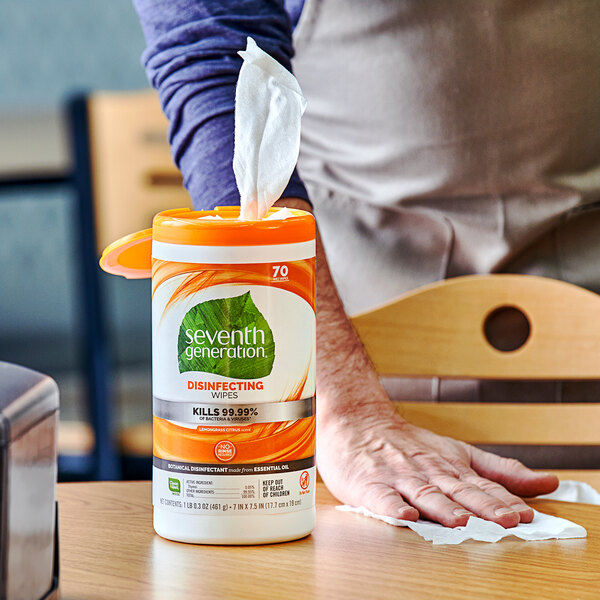
Disinfecting Wipes
Ideal for use on equipment and virtually any non-porous surface, disinfectant wipes are designed to kill cold and flu viruses and typical bacteria quickly by utilizing antimicrobial agents. They are great for use in almost every room of your business, including a busy commercial kitchen, restrooms, waiting rooms, and office desks.
- Pre-moistened with a disinfectant solution
- Come in a canister dispenser for convenient dispensing
- Bleach- and alcohol-free
- Deodorize and control odors

Sanitizing Wipes
A convenient and effective alternative to traditional sanitizing sprays, single-use sanitizing wipes disinfect and clean surfaces simultaneously. Some sanitizing wipes are EPA approved for safely cleaning food contact surfaces in busy kitchens and food prep areas.
- Pre-moistened to eliminate tricky measurements or chemical ratios
- No-rinse design
- Reduce the risk of foodborne illness
- Come in a canister dispenser for convenient dispensing

Glass Wipes
To keep your glass looking new and pristine, utilize glass-specific wipes. These wipes are usually made of a softer material and provide a streak-free clean without scratching the surface.
- Pre-moistened for quick, convenient use
- Ideal for cleaning windows, mirrors, and doors
- Not for use on food-contact surfaces
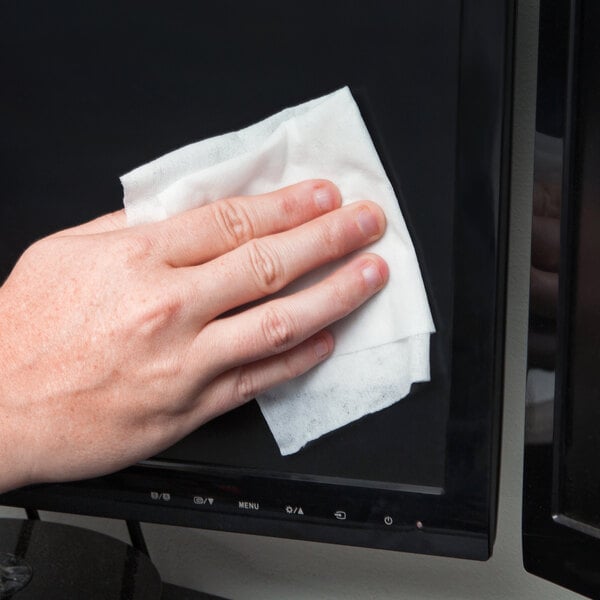
Electronic Wipes
Though many electronics around your establishment may have glass screens, it is best to use electronic-specific wipes. These are softer and use gentler chemicals, so they are safe for your devices.
- Pre-moistened for quick, convenient use
- Remove fingerprints and dust from computers, registers, and tablets
- Ideal for keeping near your POS systems
- Provides a streak-free, lint-free clean
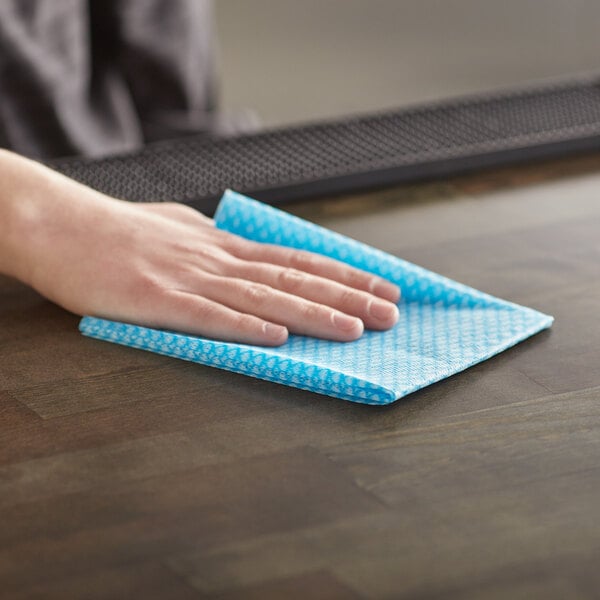
Color-Coded Restaurant Wipes
Using a color-coding system that aligns with your HACCP plan has multiple benefits for your employees and patrons. Color coding is a great way to help prevent cross-contamination, deter chemical misuse, and enhance building safety. This kind of system also improves employee training and communication. Here is the industry standard color-coding system for foodservice towels:
- Blue: Everyday surfaces, including countertops, door knobs, mirrors, and light switches
- Green: Foodservice areas, including the kitchen and behind the bar
- Red: High-risk contamination areas, such as bathrooms
- Yellow: Dry dusting and polishing, or lower-risk contamination areas
Related Resources
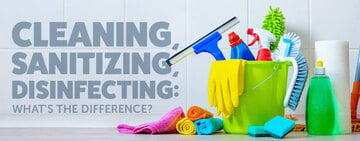
Cleaning, Sanitizing, Disinfecting: What’s the Difference?
An essential part of running a successful business is maintaining a clean environment. Whether you stay on top of your cleaning by using a cleaning checklist or schedule, ensuring that your location is cleaned regularly can help keep your staff and customers healthy. It's important to understand the different depths of cleaning to decide what method and practices you should take in your location to slow the spread of diseases and viruses. We'll be exploring the differences between cleaning, sanitizing, disinfecting, and sterilizing so that you can best incorporate them into your janitorial regimen. *Click here to see the CDC's recommendations for preventing the spread of Coronavirus . Shop All Cleaning Supplies What Is the Difference Betwee
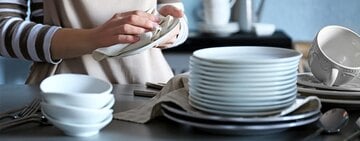
Restaurant Cleaning Checklist
Cleaning, sanitizing, and disinfecting are incredibly important in the foodservice industry to prevent cross-contamination and the spread of viruses. But, with so many things to clean in a restaurant, it can be difficult to remember all of the individual cleaning tasks that you need to take care of and how regularly you need to clean your equipment. To lessen the burden, we created this restaurant cleaning checklist that your employees can use to keep track of the cleaning tasks that need to be completed. Pair this commercial kitchen cleaning checklist with our wide selection of restaurant cleaning supplies . Click below for our downloadable restaurant cleaning checklist PDF that your employees can use as they're cleaning. Printable Cleanin

Preparing for a Health Inspection
Health inspections can be a frustrating and stressful experience, but it's important to remember that health inspectors don't come looking to shut down your operation. Health inspections are held to make sure food products are handled and prepared according to state and local regulations to protect the public. We created a restaurant health code checklist for you to follow so you can feel prepared for your next inspection. Use the links below to navigate through our health inspection tips: How to Prepare for a Health Inspection Health Inspection Checklist What to Do During a Health Inspection Understanding Health Inspection Scores Correcting Health Code Violations How to Prepare for a Health Inspection Ensure that your restaurant is ready f
- Topics 1346
- Industrial 55
- Troubleshooting Guides 21
- Restaurant Management 128
- Bar Management 55
- Catering Tips 35
- Bakery Management 42
- Food Trucks & Concessions 49
- Advertising & Marketing 37
- Eco-Friendly Tips 11
- Facility Layout & Design 41
- Coffee Shop Tips 28
- Installation & Maintenance 51
- Janitorial & Pest Control 30
- Safety & Sanitation 88
- Startup Tips 104
- Menu Design 10
- Kitchen & Cooking Tips 81
- Hospitality Management 23
- Pizza & Sandwich Shop Tips 36
- Smallwares 37
- Food Prep 88
- Tabletop Items 17
- Disposables 22
- Calculators & Tools 6
- Consumables 52
- Warewashing & Laundry 18
- Cooking Equipment 90
- Food Storage & Refrigeration 51
- Beverage Equipment 34
- Office Supplies 6
- Resource Type
- In-Depth Articles272
- Buying Guides296
- How-Tos93
- Product Reviews77


